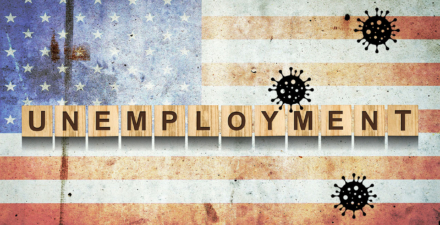Did the Paycheck Protection Program work for small businesses across the United States?

Overview
Across the United States over the past few weeks, we’ve all seen advertisements, received emails, or heard from friends about small businesses trying to inch back to some semblance of pre-pandemic normal. Hair salons reopening. Gyms welcoming people back into their facilities. Restaurants shifting from take-out only to dining outside and even inside. Specialist retail shops reopening their doors for walk-in customers. Daycare centers beginning to test whether parents will re-enroll their kids.
Now, governors and mayors across the country are giving businesses large and small the green light to invite back their customers. But these openings remain fragile, at best, or are even slipping out of reach in some places as the community spread of the coronavirus hammers Michigan bars, Texas daycare centers, and Florida restaurants. Premature reopenings, without adequate public health controls, may well put the U.S. economy right back to where it was months ago.
The minutes from the Federal Reserve Board’s closed-door interest-rate-setting meeting in mid-June showed the very real possibility of a much worse recession later this year if coronavirus cases continue to spike and the death rate begins to rise. A third of small business owners don’t expect their businesses to be back to normal for more than 6 months, according to a recent survey by the U.S. Census Bureau—and that survey was completed before it became clear that the coronavirus was never truly contained.
Against that backdrop, Congress this month extended the deadline for small businesses to apply for Paycheck Protection Program loans—loans authorized by Congress under the Coronavirus Aid, Relief, and Economic Security, or CARES, Act that allow firms with fewer than 500 employees to keep workers on payroll and pay for certain other expenses necessary to stay open. In total, Congress authorized $670 billion for the program—an amount larger than any other previous small business investment. Of the money provided by Congress since April, about $130 billion remains unused, with lawmakers debating changes to the program’s loan terms, eligible uses, and whether to create set-asides for the smallest of small businesses, as well as broader changes such as restructuring the program to work better alongside Unemployment Insurance.
As policymakers consider how to keep the U.S. economy stable while efforts to control the public health crisis continue, it is useful to evaluate the early research on the efficacy of the Paycheck Protection Program—most notably, whether the money went to the hardest-hit areas, encouraged firms to keep employees on payroll, and kept small businesses from going bankrupt. It is unlikely that any businesses—and particularly, small businesses—will be able to return to normal anytime soon, and the early evidence suggests that the Paycheck Protection Program is struggling to meet its intended goals. Examining what we know about the program can provide a roadmap on how to deploy aid to American small businesses moving forward. Here’s what the early research says:
- The Paycheck Protection Program did not generally go to small businesses in the areas hit hardest by the pandemic in terms of coronavirus infection rates and COVID-19 deaths, social distancing measures imposed, or declines in employment.
- For those businesses that received Paycheck Protection Program loans, the funding did not have a statistically significant impact on preventing avoidable layoffs among employees.
- Financial institution composition had a large effect on how many loans an area received.
- There exist significant gaps in our understanding of how Paycheck Protection Program funding served Black- and Latinx-owned small businesses.
In short, it appears that the Paycheck Protection Program was a successful liquidity backstop for firms that may have needed marginal help meeting payroll during the worst of the mandatory lockdowns, but it did not prevent layoffs.
This issue brief details these findings and then examines how different courses of action by Congress may have better met the intended goals of the program, including providing funding directly to businesses to cover revenue declines amid the coronavirus recession and removing the mediating role of private-sector financial institutions. The issue brief then concludes with program changes for Congress and the Small Business Adminisration to consider moving forward as the last tranche of PPP funding is deployed, including creating incentives for short-term compensation arrangements (otherwise known as work-sharing), dedicating set-asides for certain subsets of locations or borrowers, and using available data to monitor effects by race and ethnicity.
Was the Paycheck Protection Program effective?
The goal of the Paycheck Protection Program was to keep the employees of small businesses attached to their workplaces at pre-pandemic wages and to prevent firm bankruptcies during the pandemic by providing government support. Small businesses were invited to apply to lending institutions for loans, fully backed by the Small Business Administration, that would convert to grants if certain conditions were met. After some amendments were made to the original program design, the Paycheck Protection Program now requires businesses to devote at least 60 percent of any loan amounts to payroll costs in order for loans to be forgiven and converted into grants. These loans can be forgiven on a prorated basis if payroll spending amounts dip below 60 percent. If the loans are not forgiven, they carry a 1 percent interest rate and must be paid back within 5 years. The remainder of any business’s PPP funding can go toward paying the mortgage or rent, or certain other expenses.
There are a number of ways to measure whether the original goals of the program were met, among them:
- Geographic targeting
- Effects on employment
- Effects of intermediation by financial institutions
- Racial equity
Early research provides us some evidence in each of these arenas.
Geographic targeting
A primary question to ask in any research on the efficacy of PPP loans is: Did the funding go to the areas hit hardest by the pandemic, and therefore the areas most likely to experience small business closures?
Research suggests that was not the case. Researchers João Granja, Constantine Yannelis, and Eric Zwick of the University of Chicago Booth School of Business and Christos Makridis of the MIT Sloan School of Management find in their working paper titled “Did the Paycheck Protection Program Hit the Target” that firms were more likely to receive a PPP loan if they were located in areas with better employment outcomes, fewer coronavirus infections and COVID-19 deaths, and less social distancing. Specifically, their research finds that 15 percent of establishments in the regions most affected by declines in hours worked and business shutdowns received PPP funding. In contrast, 30 percent of all establishments received PPP funding in the least-affected regions.
Other research supports this finding. Analysis by Haoyang Liu and Desi Volker of the Federal Reserve Bank of New York titled “Where Have the Paycheck Protection Loans Gone So Far?” shows a negative relationship between coronavirus cases and COVID-19 deaths per capita in a state and the share of eligible small firms receiving PPP loans, meaning that the more cases in a community, the fewer the eligible firms that received aid. Less than 20 percent of small businesses in New York City, for example, received PPP loans, compared to more than half of firms in Nebraska. This disparity is stark, considering that New York City saw a death rate from COVID-19 approximately 20 times the rate of Nebraska. 1
Moreover, New York City began its lockdown of all but essential businesses on March 22 while Nebraska never issued a mandatory stay-at-home order and many nonessential businesses remained open during the pandemic. Liu and Volker’s research also finds no statistically significant relationship between economic hardship, as measured in unemployment claims in the state, and what proportion of the state’s small business workforce was employed at a firm that received a PPP loan.
Why is this the case? Both research studies point to the role of financial institutions, discussed more fully below, in mediating which firms did and did not receive aid.
Effects on employment
Now that we know where small business funding went, the next question is: Did it have the intended effect of preventing avoidable layoffs for the firms that did receive aid? Recent research published by the Opportunity Insights team, led by former Equitable Growth Steering Committee member and Harvard University economist Raj Chetty, suggests that the Paycheck Protection Program had little bearing on whether a business remained viable or kept their workers on payroll. Using the SBA definition of an eligible firm (generally 500 or fewer employees) and data from payroll firms, Chetty and his colleagues find that PPP-eligible businesses were no more likely to maintain workers on payroll than non-PPP-eligible businesses.
Why is that the case? The researchers suggest that funding went to firms that were most likely to keep their workers on payroll to begin with, mostly businesses that don’t need to meet face-to-face with customers, including small businesses in the professional, scientific, and technical services industry. The researchers point to SBA data, noting:
Firms in the Professional, Scientific, and Technical Services industry received a greater share of the PPP loans than Accommodation and Food Services. Yet Accommodation and Food Services accounted for half of the total decline in employment between February and March (prior to PPP enactment) in BLS statistics, while employment in Professional, Scientific, and Technical Services accounted for less than 5 percent of the decline.
In other words, the Paycheck Protection Program served as a liquidity backstop for firms that may have needed a marginal boost to keep workers on the payroll but did not contribute to employers’ threshold decisions in terms of whether to keep workers.2
Liu and Volker’s research corroborates this, but only in part. While their analysis finds a correlation between an industry being affected by coronavirus cases and COVID-19 deaths and that industry’s receipt of a PPP loan, they did not find that loan amounts were proportional to the industry’s employment decline. They also find instances of significant exceptions to this rule, with the construction industry, for example, receiving a large amount of loans despite the sector being deemed “essential” and staying open in many states.
Effects of intermediation by financial institutions
Paycheck Protection Program funding did not go to the geographic areas and business sectors hit hardest by the pandemic and the ensuing recession. What explains the disparities in which areas received funding? Evidence suggests that the size and types of financial institutions had a large role in determining which small businesses received aid, with firms in areas with the highest shares of big banks less likely to receive funding.
Congress directed the Small Business Administration to implement the Paycheck Protection Program by authorizing banks, credit unions, community development financial institutions, and certain financial technology firms to accept applications from small businesses, complete initial underwriting per the terms of the program, and send applications along to the agency for funding. In exchange for their participation, financial institutions received more than $18 billion in fee income, calculated on a percentage basis as a proportion of the total loan amount.3
Because the demand for PPP loans exceeded the supply and financial institutions were left with discretion on how to prioritize applications, lenders had a large role in deciding which applications were accepted, reviewed, and funded. Particularly for the first round of PPP funding, the program became fully subscribed quickly, running out in just 2 weeks, so lending institutions’ prioritization of applications had a material impact on who received funding.
The evidence in the available research suggests that big banks had less interest in the Paycheck Protection Program than their smaller counterparts, meaning areas with high concentration of smaller institutions performed better than others. Liu and Volker, in their analysis “Where Have the Paycheck Protection Loans Gone So Far?,” find a strong relationship between the market share of mid-sized and community banks in a state and the share of small businesses within a state that received a PPP loan.4 This is corroborated by analysis from the Institute for Local Self-Reliance, which also finds that states where community banks had a larger market share had a higher distribution of PPP loans per capita.5
Granja and his co-authors, in their study “Did the Paycheck Protection Program Hit the Target?,” came to similar conclusions, noting that areas predominately served by the largest banks—JPMorgan Chase & Co., Wells Fargo & Co., Citigroup Inc., and Bank of America Corp.—underperformed in the provision of PPP loans, given those banks’ market share of typical small business lending. Indeed, while these four large banks originated 36 percent of all small business loans before the pandemic, they originated just 3 percent of PPP loans.
These conclusions intuitively make sense, considering that rural areas, which received an outsized share of PPP loans, are more likely to be served by community financial institutions and less likely to be served by big banks. That said, Granja and his co-authors did find areas served by larger mid-sized banks typically had more PPP loan penetration than areas served strictly by the smallest banks. This suggests there were some advantages in economies of scale and nimbleness in responding to new program terms, up to a point.
Neither Liu and Volker nor Granja and his co-authors offer hypotheses on why the largest banks underperformed in PPP lending. That said, some rough data and anecdotal evidence provide some potential explanations for why smaller institutions generally did a better job than the largest U.S. lending institutions in deploying small business funding. SBA data show that the average PPP loan size for banks with more than $50 billion in assets was nearly $120,000, while the average loan size for banks with less than $1 billion in assets was around $85,000, and the average loan size for community development financial institutions—some of the very smallest financial institutions—was around $51,000. This suggests that perhaps large banks prioritized making fewer, bigger loans due to the fee income structure of the program and the more complex bureaucracies at the institutions.
Additionally, past research from the Federal Deposit Insurance Corporation, the nation’s supervisor of most small U.S. banks, notes that community banks “are said to be relationship lenders, which rely to a significant degree on specialized knowledge gained through long-term business relationships. They are likely to be owned privately or have public shares that are not widely traded, and therefore tend to place the long-term interest of their local communities high relative to the demands of the capital markets.” In the case of the Paycheck Protection Program, the relationship lending model may have meant that community banks had better pre-existing relationships with local small businesses and a greater focus on lending rather than, say, investment banking or trading.
Finally, other reporting by Barron’s suggests that community banks saw the Paycheck Protection Program as an opportunity to build new lending relationships. This opportunity was perhaps overlooked by larger financial institutions with more customers and more lines of business.
Whatever the explanation, it is clear that the composition of lending institutions in an area had a significant impact on mediating aid to eligible businesses, providing policymakers with considerations for how to structure rules around remaining payouts and suggesting that future programs may want to consider distributing aid in more geographically neutral ways.
Racial equity
It is also crucial to understand whether the Paycheck Protection Program is reaching small businesses owned by people of color, particularly Black and Latinx small business owners who have historically faced lending discrimination and other barriers to entrepreneurship. Encouraging small business formation and survival for Black and Latinx entrepreneurs is a worthy goal for public policy. Research evidence from the Federal Reserve Bank of St. Louis shows that for Black Americans who achieve small business ownership, Black entrepreneurs have both higher levels of wealth and higher levels of wealth mobility than Black workers.
The same study also found that Black entrepreneurs have levels of wealth mobility equal to those of White entrepreneurs, while White workers have greater wealth mobility than Black workers. History also demonstrates that Black-owned small businesses help cultivate a vibrant civil society. Black-owned businesses were crucial in financing the civil rights movement of the 1960s, for example, by providing goods and services to people otherwise locked out of White-owned businesses and supporting the autonomy of Black activists, who as employees or customers would not be punished for exercising their right to protest.
How did Black and Latinx small businesses fare under the Paycheck Protection Program? Because policymakers chose not to track PPP funds by race or ethnicity, it is hard to know how the money was distributed disaggregated by the race or ethnicity of the business owner. Lenders were not required to collect information on the demographics of borrowers at the time of the loan application or when the loan was funded. Though Congress, in the Dodd-Frank Wall Street Reform and Consumer Protection Act of 2010, required that the Consumer Financial Protection Bureau establish a framework for small business application and lending data collection by race, ethnicity, and other protected characteristics, the new agency never finalized that rulemaking.
That said, the Small Business Administration did include a field requiring that small business owners report their gender, race, ethnicity, and veteran status in paperwork required for loan forgiveness, which will be submitted by borrowers when they seek to have the loan extinguished after meeting program requirements. The agency last week committed to publicly providing those data and has released initial data on the program, though without demographic information.6
While this transparency effort is significant, it will still leave some gaps in our understanding. First, the data will not cover those businesses that do not wish to have their loan forgiven, and it also will not include information about loan applications submitted but not approved, meaning it will be impossible to see how many Black and Latinx small businesses had their funding requests rejected.
In the meantime, lacking hard data, we turn to survey evidence to determine whether the Paycheck Protection Program is adequately serving Black and Latinx small business owners. One survey by the advocacy groups Color of Change and UnidosUS, taken between April 30 and May 12, finds that just 12 percent of Black and Latinx small business owners who applied for aid from the Small Business Administration reported receiving the amount they requested, while 26 percent said they had received only a portion of what they had requested. These figures, while distressing on their own, are particularly troubling, given that small businesses owned by Black and Latinx entrepreneurs are more likely to be in industries highly impacted by the coronavirus—meaning they’re more likely to need this bridge funding than other businesses more insulated from the pandemic’s effects.
Policy recommendations
The Paycheck Protection Program, totaling $670 billion in funding, is the largest investment in our nation’s small businesses and has the power to reshape our economy. Early lessons from the rollout of the program suggest some benefits—namely, that the money was nearly fully subscribed and that there was robust interest among eligible small businesses. But it appears that the program’s design impaired the loans from going to the neediest areas and businesses and from preventing avoidable layoffs.
The preliminary evidence strongly suggests that PPP funding was more of a liquidity program for small businesses that needed a boost in payroll funding to get through the early weeks of mandatory lockdowns rather than a social insurance program designed prevent avoidable layoffs. That said, early research findings must be caveated by reports of data errors. The Small Business Administration should work to improve the accuracy of data reporting, particularly as business owners move to have their loans forgiven.
Given the shortcomings of the PPP, if policymakers could rewind the clock, what should Congress have done instead? The Paycheck Protection Program’s tripartite goals—keeping workers’ income steady, keeping workers attached to firms, and helping workers weather mandatory lockdowns—at times may have run at cross-purposes. It is hard to access the efficacy of a counterfactual, but proposals similar to the Danish model, in which small businesses were automatically provided with stopgap funding to cover revenue lost for a certain time, may have proven more successful.
Indeed, Paycheck Protection Program rules requiring that funding go directly to payroll support may have disadvantaged businesses in areas with high rent or mortgage costs, businesses that might take a while to hire back employees (including those operating in areas with longer periods of mandatory lockdowns), or businesses that needed to make substantial investments in social distancing measures before reopening. A blanket promise to cover revenue losses and invest in social distancing, via grants, would have better addressed these issues.
Similarly, policymakers should consider deployment mechanisms in the future that provide aid to small businesses directly rather than via banks, credit unions, and other lenders. Small businesses in certain areas should not be disadvantaged in accessing a government-authorized program simply because of the composition of lending institutions in their area. As discussed in a previous Equitable Growth analysis, options include expanding public banking options and increasing the in-house capacity of the Small Business Administration, which has only around 3,300 employees, with total salaries and expenses of around $447 million. Given the $18 billion spent on administering the Paycheck Protection Program through private lending institutions, an additional investment in agency capacity may be wise in terms of minimizing long-term costs while meeting policy goals related to the equity of rescue funding deployment. After all, emergency SBA funding may be needed again in the future, including but not limited to instances involving natural disasters.
With the available evidence today, what short-term changes could policymakers consider implementing to guide the last tranche of available funding?
One policy option worth considering is the Rebuilding Main Street Act from Sens. Chris Van Hollen (D-MD), Jeff Merkley (D-OR), and Chris Murphy (D-CT). This legislation would rejigger the Paycheck Protection Program to work in tandem with the enhanced Unemployment Insurance benefits under the CARES Act. Specifically, the proposal would provide grants to particularly hard-hit small businesses to cover fixed costs and expenses, provided that the employers use short-term compensation arrangements or a system whereby employers avoid layoffs and instead reduce the hours worked by each employee at the firm. Employees would then continue to receive Unemployment Insurance on a prorated basis to compensate for reduced wages. Short-term compensation arrangements are already in place in 26 states plus Washington, D.C.
These PPP enhancements could allow businesses to cover the fixed costs needed to get started again, including supplies, rent, mortgage, investments in social distancing, and personal protective equipment. And it would enable the firms to slowly ramp up the hours worked by employees as the business gradually recovers. At the same time, it would allow employees to maintain a relationship with their employers and more quickly resume past earnings as the economy recovers.
Research from Marth Gimbel of Schmidt Futures and Jesse Rothstein and Danny Yagan of the University of California, Berkeley looking at CARES Act programs compared to other global responses note that job losses have been lowest in countries that either contained the coronavirus early or had robust systems for subsidizing employment at reduced hours. Their research also points to historical data, noting that many credit Germany’s quicker recovery after the Great Recession to the short-term compensation program.
Beyond the macroeconomic benefits, research from Steven Davis of the University of Chicago and Till Von Wachter of Columbia University suggests that workers who are laid off from a job take a long time to gradually climb back up the job ladder and find a match as good as the one they once had. Reworking the Paycheck Protection Program with enhanced Unemployment Insurance benefits to better interlock unemployment benefits and PPP lending objectives could help the United States achieve these goals.
Short of a wholesale redesign along the lines of the Rebuilding Main Street Act, policymakers might want to consider program enhancements to correct for the program’s funds not reaching the areas hardest hit by the coronavirus pandemic. Dedicated set-asides by state according to the number of people employed by eligible small businesses, or in certain sectors, may be warranted, if coupled with loosening rules to allow more investments in nonpayroll expenses. Of course, if this route is taken, it is especially imperative for policymakers to extend enhanced Unemployment Insurance benefits to offset any workers losing employment through the Paycheck Protection Program.
Policymakers may also want to consider certain program changes to better serve industries disproportionately left behind by the early rounds of PPP lending, especially the accommodation and food services industry. Economist T. William Lester of the University of North Carolina, Chapel Hill provides some policy recommendations for how to reach small restaurants and bars, for example.
Policymakers also must closely examine data on small business loan forgiveness by race and ethnicity when they become available. If initial survey evidence holds, then firms owned by Black and Latinx entrepreneurs may not have had equal access to PPP lending. At a minimum, the coronavirus pandemic’s impact on small business financing demonstrates that the Consumer Financial Protection Bureau should finalize the required rule on small business data collection so that policymakers and advocates have actionable information moving forward.
Finally, some research suggests that policymakers should prioritize extending social insurance benefits over continuation of the Paycheck Protection Program. Harvard’s Chetty and his co-authors suggest in their recent research that a better approach moving forward would be to invest in income support for individuals, including extending increased Pandemic Unemployment Insurance benefits past the current July 31, 2020 deadline. As the Opportunity Insights team notes, “it may be more fruitful to approach this economic crisis from the lens of providing social insurance to reduce hardship rather than stimulus to increase economic activity. Rather than attempt to put workers back to work in sectors where spending is temporarily depressed because of health concerns, it may be best to focus on mitigating income losses for those who have lost their jobs.”
Conclusion
The still-spreading coronavirus pandemic makes clear that no amount of declaring businesses reopened will create an economic recovery. Research suggests that consumer spending will remain woefully anemic until the public health crisis is under control. The Paycheck Protection Program, as currently designed, is not well-equipped to prevent avoidable small business closures or employee layoffs. Policymakers should consider implementing program improvements, particularly short-term compensation arrangements but also more modest measures, remain committed to income supports until safe jobs are actually available, and reassess the small business landscape once the virus subsides. Even if policymakers change course now, it is clear that significant investments in small businesses, perhaps akin to a domestic Marshall Plan to rebuild these critical engines of employment, entrepreneurship, and economic growth, may be needed to reverse the effects of the coronavirus and its recession.
End Notes
1. Calculated as the ratio of reported COVID-19 deaths and total population, with data from Google.com’s coronavirus statistics data.
2. Firms did need to certify to the SBA as a condition of receiving a PPP loan that “(c)urrent economic uncertainty makes this loan request necessary to support the ongoing operations of the Applicant.” But firms were not required to specifically certify that without the PPP loan, they would have undertaken layoffs. It is also unclear what SBA resources will go into policing enforcement with this certification.
3. Calculated by totaling loan amounts for various cohorts of loan sizes (less than $350,000; between $350,000 and $2 million; and more than $2 million) and multiplying those totals by the SBA’s fee schedule for loan processing, using data from Small Business Administration, “Paycheck Protection Program (PPP) Report” (2020), available at https://www.sba.gov/sites/default/files/2020-07/PPP%20Results%20-%20Sunday%20FINAL-508.pdf; U.S. Department of the Treasury, “Paycheck Protection Program (PPP) Information Sheet” (n.d.) available at https://home.treasury.gov/system/files/136/PPP%20Lender%20Information%20Fact%20Sheet.pdf?#:~:text=SBA%20will%20pay%20lenders%20fees,loans%20in%20the%20following%20amounts%3A&text=Five%20(5)%20percent%20for%20loans,loans%20of%20at%20least%20%242%2C000%2C000.
4. The authors do not indicate in the study how they defined mid-sized or community banks, though they note that the 15 largest banks in the United States originated just 26 percent of all PPP money disbursed.
5. The Institute for Local Self Reliance defines a community bank as one with less than $5 billion in assets.
6. The Small Business Administration noted that 75 percent of all PPP loans did not include any demographic information because that information was not provided by the borrowers. Available by downloading PPP data files within U.S. Department of the Treasury, “PPP Loan Data – Key Aspect” (n.d.), available at https://home.treasury.gov/policy-issues/cares-act/assistance-for-small-businesses/sba-paycheck-protection-program-loan-level-data.






